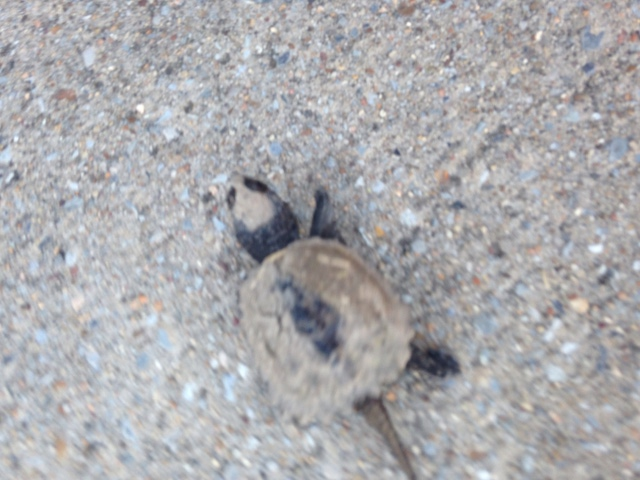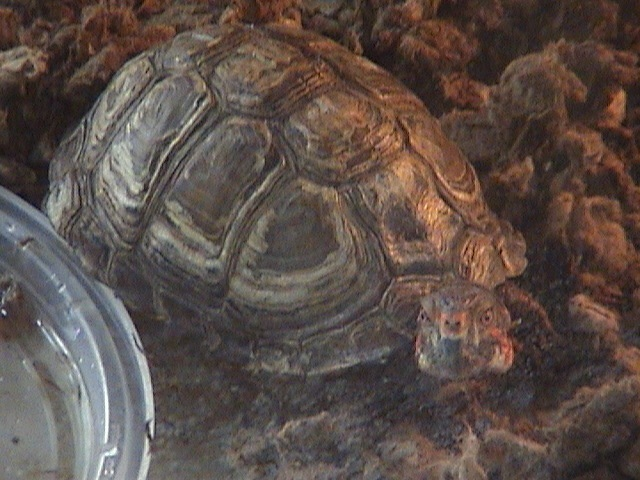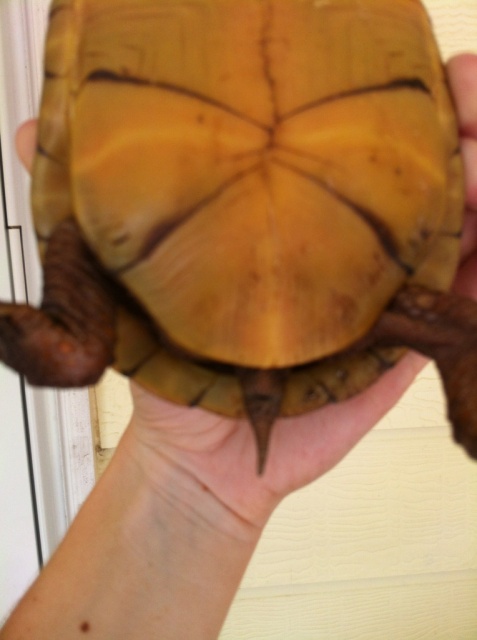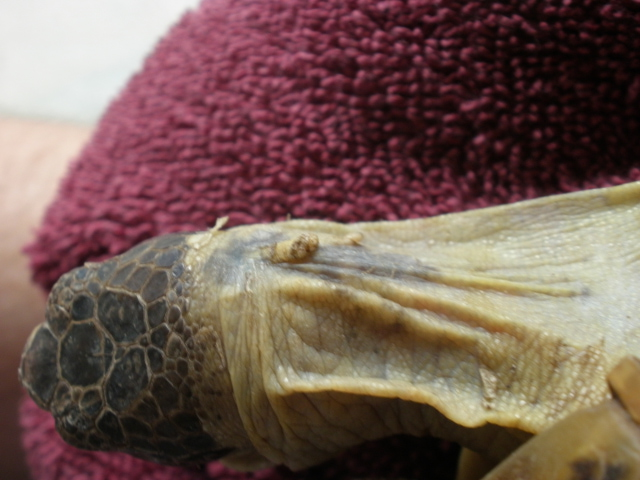QuestionI have a four year old Red-foot tortoise. He is about 4 years old and 4 3/4 inches. He is in a long tub with newspaper as bedding, he has a heating pad, a water dish big enough to soak in and a food dish next to that. The temp i keep him at is around 80 and humidity around 50. I spray his tank with water everyday, and i soak him once a week. His diet is pellet food made for tortoises and veggies and sometimes fruit. I have noticed that he has a cut in the corner of his mouth, by the looks of it, it is getting bigger! i dont know what to do! it has this brown scab over it. Any ideas on how to help it heal? do i need to take him to a vet for it? I read online that you could put antibiotic ointment on it and i have put that on him but it doesnt seem to do anything..this is my first tortoise and im new to them, ive had him for about 2 years and he just got this about a month ago, i heard they were slow healers so i wasnt worried but now i am starting to worry..Help!
AnswerHi Amber,
I suspect that the cut or damaged area is actually related to how you're keeping him, so let's address that and then discuss the injury.
Redfoots are tropical tortoises that need plenty of room a moist environment. I don't know who told you to keep him on newspaper, but they gave you very bad information. They can grow up to 12" long, at which point you'll need a fairly large enclosure (about 4 x 8 if indoors all year round), but for now something around 3 x 5 (or bigger) is adequate. For substrate, use a 50/50 mix of coir (Bed-a-beast or Ecoearth) and playsand, and then mix in some sphagnum moss (you can find it with the houseplant soil/mosses at Home Depot or Lowe's; I think the brand is Mosser-Lee), and make sure it stays moist. If you raise up the cool end of the enclosure, water will collect at the warmer end and make it nice and boggy. Moisture is vitally important to a redfoot! I don't measure humidity, because air humidity is not as important as moisture *in* the substrate.
Get rid of the heating pad; tortoises need heat from above. You need a basking lamp and a source of UVB. You can either use a combo heat/UVB bulb (ZooMed Powersun) or a separate heat bulb with a tube UVB bulb (ZooMed Reptisun 10.0). Use either of these bulbs, but not any others--there are other UVB bulbs on the market, but they don't produce adequate amounts of UVB. The combo bulb needs to be replaced yearly, and the tube bulb every six months. You need a basking temperature of 90-95 degrees--measure this on the substrate directly under the basking bulb, not air temperature. The cooler areas should be mid to high 70s. If your house doesn't drop below about 65 at night, you don't need night heat.
Keep the water dish in the enclosure at all times; many redfoots like to sit in their water dish, sometimes for hours. Because he's probably dehydrated, I would soak him every other day for a week, and then soak 2-3 times a week.
Ditch the pellets--they're not good for tortoises. Unfortunately, there's a lot of products out there that are marketed for tortoises that really aren't good for them, and some are actually dangerous. Redfoots are omnivores, so should be feed a diet of greens, fruit, veggies, and some animal protein. Greens should be the base of the diet: turnip, mustard, collards, kale, spring mix, dandelions, romaine, etc. Limit the amount of lettuce because it's not high on the nutrition scale; turnip and dandelion are excellent. Feed fruit a few times a week; anything except citrus and pineapple, but limit banana. You can feed veggies a couple of times a week: squashes, peppers, mushrooms, lightly boiled sweet potato, carrots, tomatoes (limited). Animal protein should be fed no more than once a week and can include boiled chicken/egg, worms, crickets, pinky mice, snails, and so forth. You want to feed as much variety as possible.
I think the injury to the corner of his mouth may be due to being much too dry, but if you can post a picture of it I can get a better idea of what it looks like. You may need to take him to a vet, but at this point I would change his enclosure and see how he does (that's assuming it's not too bad when I get a look at it, and he's otherwise active and eating). I'm linking a couple of sites for you below that will give you more information on how to care for him. Please ask questions if anything is unclear.
http://redfoottortoise.com/
http://tortoiseyard.com

 Turtle kind
Question
Turtle
I found a turtle in Northeast Te
Turtle kind
Question
Turtle
I found a turtle in Northeast Te
 can my turtle live in the wild
Question
clover
well she is an indoor turtle but
can my turtle live in the wild
Question
clover
well she is an indoor turtle but
 male or female box turtle?
Question
box turtle
Is this a male or female box
male or female box turtle?
Question
box turtle
Is this a male or female box
 sick spur thigh
Question
Right Left
African Spur Thigh, T
sick spur thigh
Question
Right Left
African Spur Thigh, T
 Russian Tortoise neck discoloration
Question
Neck 1 Neck 2
I have a Russian to
Russian Tortoise neck discoloration
Question
Neck 1 Neck 2
I have a Russian to